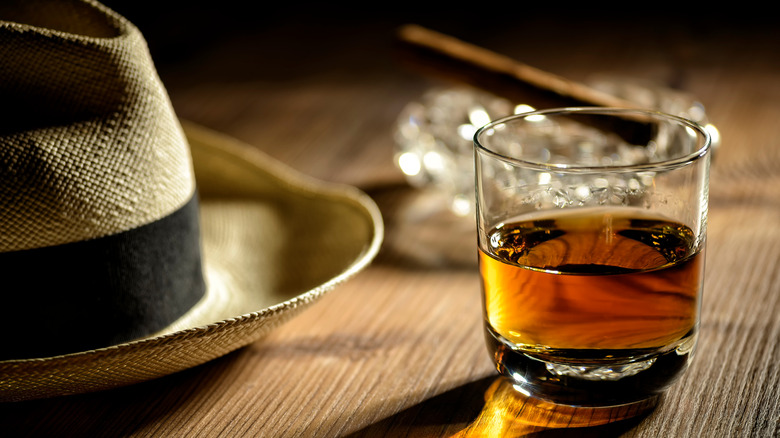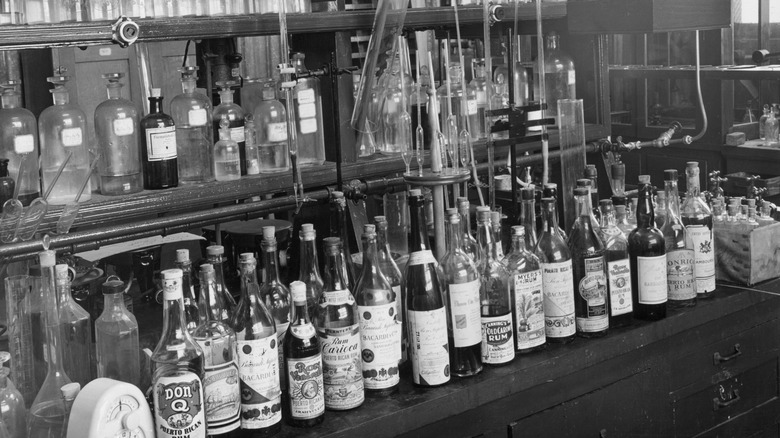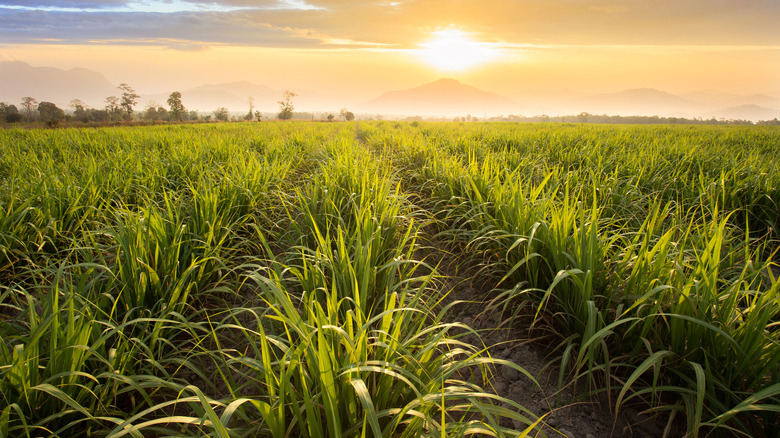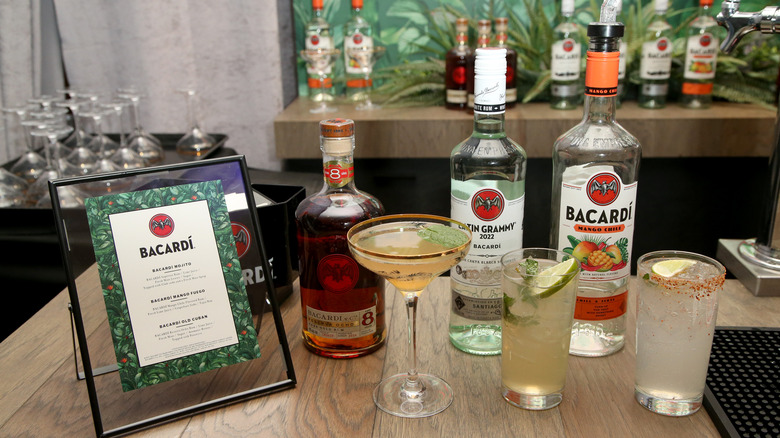Why Puerto Rico Is Considered The Rum Capital Of The World
Imagine sun-kissed beaches, palm trees, and a rum punch. Although it may sound cliche, these components do define a Caribbean getaway, but past that, simple summaries don't do these diverse islands justice — especially when it comes to the boozy component. Alongside distinct histories, cuisines, and local culture, nearly every Caribbean island is defined by its own rum style, favoring a variety of processing methods and flavors.
In Puerto Rico, it's all about light-bodied rums, run through multiple rounds of distilling for a clean flavor, notes AFAR. In contrast to full-bodied, funky Jamaican rums, the Puerto Rican variety is the one to seek out for a well-balanced coquito, a tropical-themed alcoholic eggnog cocktail. And perhaps that's why the island's dependably delicious rums are taking the world stage. Home to the "Cathedral of Rum," the world's largest rum distillery (via Difford's Guide), it isn't only about quantity here, either. Quality, legacy, and more — let's dive into why Puerto Rico is considered the rum capital of the world.
Puerto Rico produces a large volume of rum per stringent standards
Purto Rican rum dominates the American market — more than 70% of the liquor sold stateside comes from the island. There are at least 80 types distilled in the territory, ranging from varieties aged for years to white rum. And if that's not enough to stake Puerto Rico's claim as a rum hot spot, consider that Bacardí, one of the world's most popular rum, is produced on the island, per Discover Puerto Rico.
According to Puerto Rico's Department of Economic Development and Commerce, the island's rum industry generates $300 million annually and provides 700 jobs in distilleries. The authority defines the island's output by four components, according to a legal term known as "The Rum Standard." The island's product must be made with molasses created from sugarcane, the distillation must be done using the continuous column still method, the resulting product must be aged in oak barrels, and of course, to receive the "Made in Puerto Rico" label, every step of the process must take place on the island, notes Distillery Trail. Such a methodology preserves a centuries-old rum-making tradition — let's dive into how it started.
History of rum in Puerto Rico
Rum production intertwines with sugarcane — a crop that's long been interwoven with Puerto Rican history. Conquistador Juan Ponce de Leon introduced the first stalks in 1506, and the first sugar mill opened only 11 years later. Production, both of the crop and the booze, significantly amplified when Puerto Rico was ceded to the United States. Sugarcane's harvest and processing became a principal income source during the first half of the 20th century, notes Casa Melaza. Since rum is made from molasses, a byproduct of sugar production, fermentation methods arose alongside the sugarcane industry. By the 16th century, rum had already gained an economic stronghold on the island, per Tales of the Cocktail.
The island's oldest continuously operating rum producer is Ron del Barrilito, open since 1880. Started by engineer Pedro Fernández, his methods combined liquor aging techniques from his time in France with sugarcane distilled from his hacienda. Today, the brand continues to age and blend rums, although they no longer distill, per Atlas Obscura.
Rum brands in Puerto Rico
Some brands may market themselves as the island's best rum, but Puerto Rico's distilleries dependably adhere to tight quality control. Most of the island's production is done by five major companies: Don Q, Bacardí, Ron del Barrilito, Palo Viejo, and Ron Llave. Bacardí, which migrated from Cuba, is the globe's biggest premium rum producer — and draws the most international attention. However, Don Q is the best-selling rum on the island, notes B Media Group.
Puerto Rico's production is dominated by these large distilling operations. In large part, it's due to a tax rum rebate program established by the U.S. government in 1917. The island's government receives a portion of taxes off Puerto Rican rum sold in the United States. It then redistributes approximately 40% of those funds back to rum distillers — Bacardí received $350 million between 2011 to 2016.
Although these funds may be reinvested to grow rum production on the island, it creates difficulty for smaller producers. The paperwork and bureaucracy required to set up the rebate program keep rum exports centered around the top producers. However, conditions are changing. More and more small rum distillers are centralizing the process, taking charge of every step from sugar cane production to rum sale, explains Life & Thyme. So while the big names will continue to define the rum capital of the world, look out for a new wave of small-batch rums — they'll be sure to impress.



